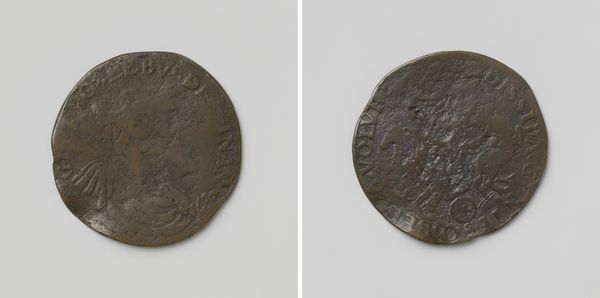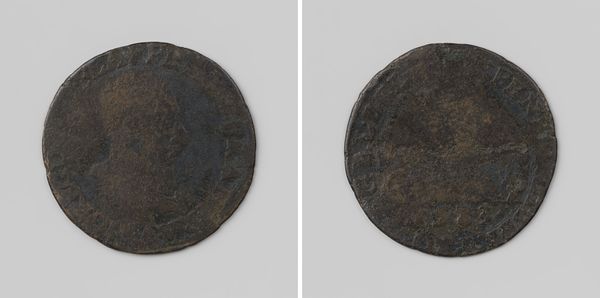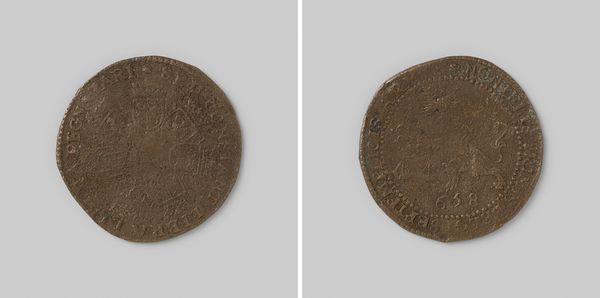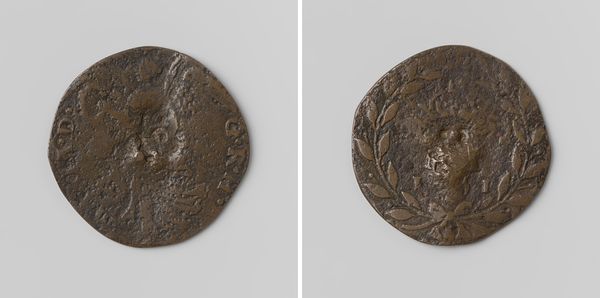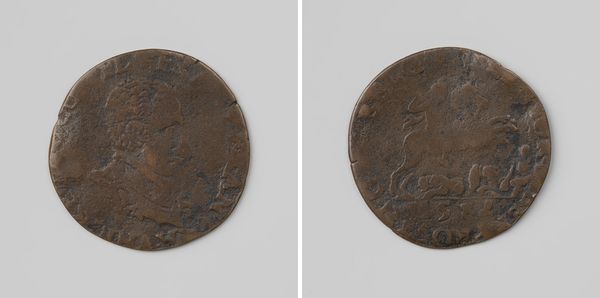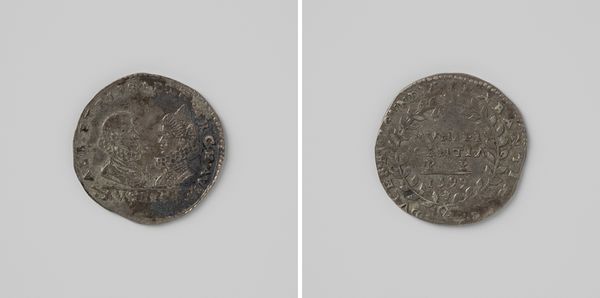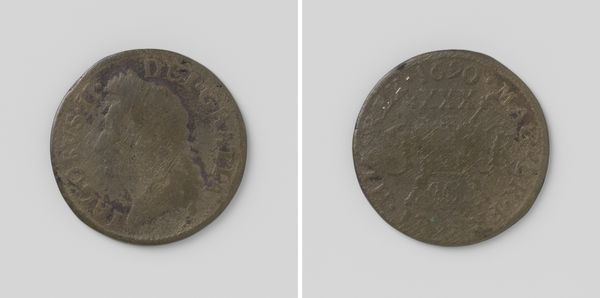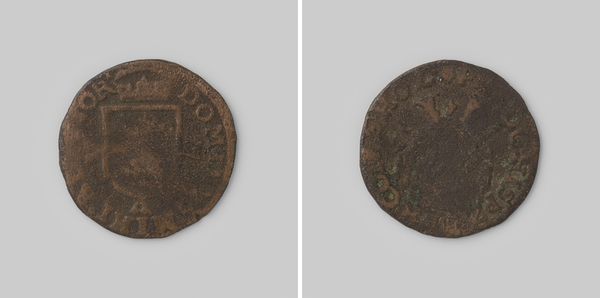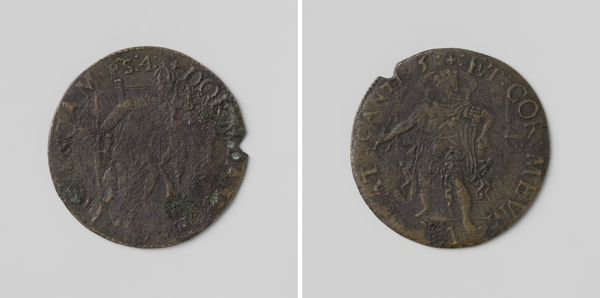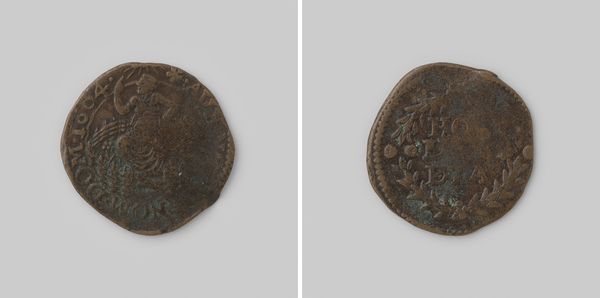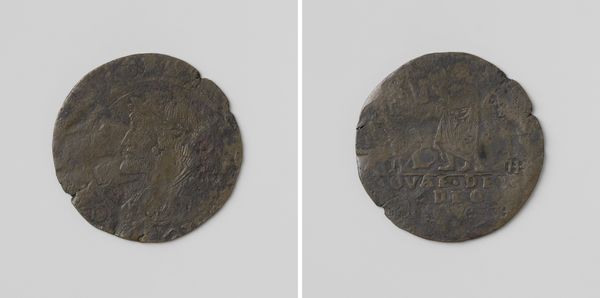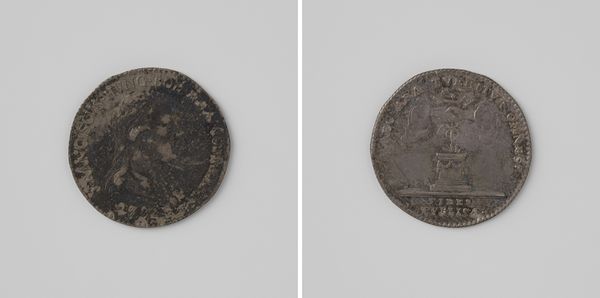
metal, sculpture
#
portrait
#
medieval
#
metal
#
sculpture
#
sculpture
Dimensions: diameter 2.8 cm, weight 9.17 gr
Copyright: Rijks Museum: Open Domain
Curator: This is a coin depicting William III, King of England, crafted sometime between 1689 and 1702. The anonymous artist worked with metal to capture the king's likeness. Editor: The immediate impression is one of solemnity. Despite its small size, the portrait emanates authority and history; it almost feels weighty, laden with the burdens of leadership. Curator: Given its purpose, weightiness makes sense. Currency embodies power, doesn't it? The choice of metal and the production of these coins would have been meticulously controlled. I imagine the creation process – the minting, distribution – served as a physical assertion of royal and national power. Editor: Absolutely, the effigy itself tells a story. We see a classical profile – carefully stylized to suggest wisdom and strength. The very act of placing the monarch’s image on currency elevates him, linking him to concepts of wealth, value, and enduring legacy. And that specific gaze—did it inspire confidence in those turbulent times? Curator: You're drawing my attention to the socio-economic context. Who was benefiting from it, exactly? Were the raw materials sourced ethically? Where were the mints located, and who did they employ? It's a small object, but the labour it represents would tell you stories about society, commerce and trade then. Editor: Considering the iconography, look at the way even the simple text circling the image feels deliberate, like incantations adding legitimacy to the ruler's reign and policies. Curator: And who controlled the messaging? It’s not just about the image, but also about how the design could be disseminated. And whether such symbolic statements actually had the effect desired. I guess that power also lies in distribution and its access. Editor: Yes! It also reminds me of the weight such objects held for common folk—did they even see coins with his face, or understand all the associations being woven by its symbols and portrait? Did owning something carrying that symbolic heft convey social status in turn? Curator: I suppose studying such common items is fascinating from the perspective of working class, to see if they truly mirrored or adopted such views. Editor: Thinking about its imagery helps contextualize and perhaps critique official representations. The artistry elevates this humble metal token. Curator: Well, that’s got me considering it in different light myself.
Comments
No comments
Be the first to comment and join the conversation on the ultimate creative platform.
